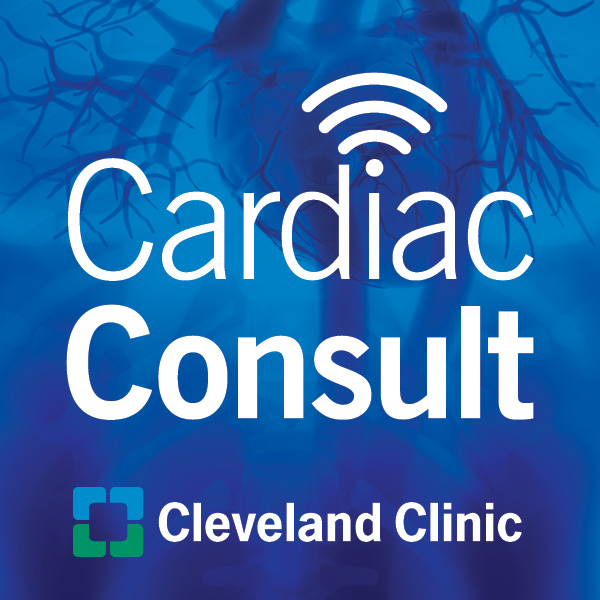
Cardiac Consult
A Cleveland Clinic podcast exploring heart, vascular and thoracic topics of interest to healthcare providers: medical and surgical treatments, diagnostic testing, medical conditions, and research, technology and practice issues.
Subscribe:

Featured Episode
Guidelines and Innovations Shaping Peripheral Artery Disease Treatment
Lee Kirksey, MD, Aravinda Nanjundappa, MBBS, MD, and G. Jay Bishop, MD, discuss a multidisciplinary approach to peripheral artery disease (PAD) management. They explore evidence-based strategies including early detection, optimal medical therapy, supervised exercise programs and advanced endovascular and surgical interventions, emphasizing team-based care and longitudinal follow-up for improved outcomes.
Play NowAll Cardiac Consult Episodes
November 26, 2025
American College of Cardiology Concise Clinical Guidance on Pericarditis
Allan Klein, MD, and Tom Kai Ming Wang, MBChB, discuss the 2025 ACC Concise Clinical Guidance on pericardial disease.
Play NowNovember 20, 2025
Expertise in Valve-Sparing Aortic Root Replacement
Lars Svensson, MD, PhD, and Xiaoying Lou, MD, share valve-sparing aortic root surgery, that preserves the patient’s native valve while treating aortic aneurysms.
Play NowNovember 13, 2025
Research: Gene Editing for Lifelong Lipid Control
Steven Nissen, MD, and Luke Laffin, MD, discuss a groundbreaking phase 1 trial of a CRISPR-Cas9 gene-editing therapy targeting ANGPTL3.
Play NowNovember 6, 2025
Lifelong Mitral Valve Management After Repair
A. Marc Gillinov, MD, and Tarek Malas, MD, discuss the long-term benefits of mitral valve repair for patients with degenerative mitral valve disease.
Play Now


